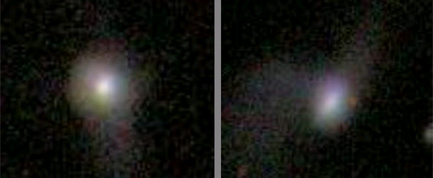High-Energy Jets Found to Do Black Holes' Dirty Work

ST. LOUIS ? The universe's hefty black holesare known to devour everything within their reach. Now astrophysicists havefound that some of the most massive of these sinkholes use high-energy jets tostomp out nearby star formation.
Thefinding, presented today here at a meeting of the American Astronomical Society(AAS), solves a long-standing problem in galaxy-formation models.
"Theproblem is that when you run these models and compare them to observations,what you find is that the models over-predict stellar mass in low-mass galaxiesand in high-mass galaxies,"said researcher Sugata Kaviraj, an astrophysicist at Oxford University in England. "There are too many stars."
To make themodels fit with observations, astronomers previously have relied on two meansfor quenchingstar formation.
In lessmassive galaxies, exploding stars were added as the party crashers, impartingenough energy to disperse close-knit bundles of gas that fuel star formation.
When agalaxy beefs up to the equivalent of 10 billion suns, however, supernovaedon't have enough power to throw out star-forming gas. As the mass of a galaxyincreases, the gravitational pull holding onto that gas also soars, making ittougher to give that gas the boot. And so theorists figured that in the beefiergalaxies, supermassive black holes, thought to reside at the centers of mostgalaxies, could take over and stomp out star formation.
As gasfalls into the gravitational clutches of a supermassive black hole, the energygets spit out as a pair of laser-like jets from either end of the black hole.These active black holes, called active galactic nuclei (AGN), have enoughenergy to power 10 billion stars like the sun. They also can kick out gas fromhefty galaxies, theory had suggested.
Breaking space news, the latest updates on rocket launches, skywatching events and more!
"Theproblem was that people used these supernovae and AGN prescriptions to matchthe models to the observations," Kaviraj told SPACE.com. "However, there was noevidence that this is actually how nature works."
To naildown that evidence, Kaviraj and his colleagues looked at the level ofstar-snuffing taking place in so-called post-starburst galaxies, which showevidence of recent (within 1 billion years) star formation that was abruptlyhalted. They used ultraviolet data collected by the orbiting space telescope,NASA's Galaxy Evolution Explorer, and optical images from the Sloan Digital SkySurvey.
The team studiedthe relationship between galaxy mass and rate of star quenching, which insimple terms means the number of stars snuffed out in a certain period of time.If supernovae were the only means of kicking out gas, Kaviraj would expect therate of star quenching to decrease as the galaxy mass goes up.
And that'swhat the researchers found for galaxies below 10 billion solar masses. Abovethis weight, they found the opposite: As mass increased, star quenching alsoboosted dramatically.
Kavirajsaid these observations support the AGN/jets explanation in the most massivegalaxies. Once galaxies grow to about 10 billion solar masses, when supernovaecan't kick out gas, active supermassive black holes take over. The blackhole's powerful jets must be kicking out the gas, at least in thepost-starburst galaxies studied, he said.
Astronomersalso have found that galaxies weighing more than 10 billion suns are morelikely to have AGNs than galaxies lighter than 10 billion suns.
While thecurrent results are based on nearby galaxies, the researchers hope to widen thescope of the work to include more distant galaxies that date back to the peakepoch of star formation some 10 billion years ago, when the universe was only25 percent of its current age.
Thisresearch was funded by a Leverhulme Early-Career Fellowship, a BIPAC fellowshipat the University of Oxford and a Research Fellowship at Worcester College, Oxford.
- Video: Supernova ? Destroyer, Creator
- Top 10 Weirdest Things in Space
- Gallery: Spitzer'sInfrared Views of the Cosmos
Join our Space Forums to keep talking space on the latest missions, night sky and more! And if you have a news tip, correction or comment, let us know at: community@space.com.

